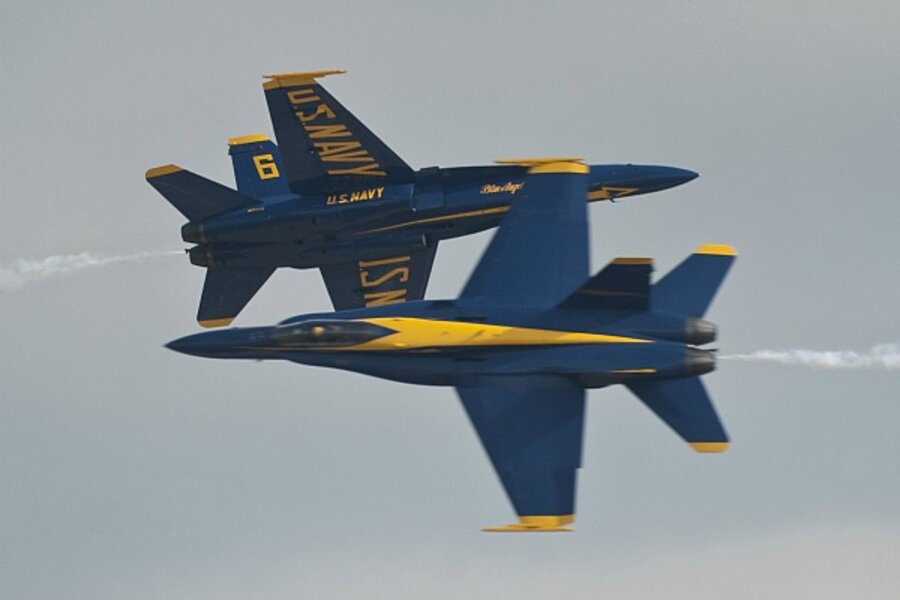Blue Angels flight leader relieved of command for flying too low
Loading...
The commanding officer of the Blue Angels – the US Navy’s flight demonstration team – has been relieved of command for performing dangerously low maneuvers.
In a highly unusual step, Navy Cmdr. Dave Koss announced Friday that “with deep personal regret … I will be voluntarily leaving the greatest flight demonstration team.”
"I performed a maneuver that had an unacceptably low minimum altitude,” Cmdr. Koss said in a statement. "This maneuver, combined with other instances of not meeting the airborne standard that makes the Blue Angels the exceptional organization that it is, led to my decision to step down."
Based in Pensacola, Fla., the Blue Angels fly approximately 70 shows a year between March and November. Most air shows are in the United States, although the team has performed in Sweden, Finland, Russia, Bulgaria, Italy, the United Kingdom, Romania, Spain, Germany, and the Netherlands.
While the Navy and Marine Corps aviators chosen to fly with the “Blues” are a highly-elite group, the mentally- and physically-demanding maneuvers they perform “reflect the daily challenges met by fleet Navy and Marine Corps aviators,” according to the organization.
The team, which performs before an estimated 11 million people each year and regularly visits hospitals and schools, is one of the Navy’s most important recruiting tools.
Blue Angels pilots average 33 years old, which means they’ve had about 10 years military flying experience. Over the years, many have had combat experience as well. Koss is a 1991 US Naval Academy graduate with more than 3,000 flight hours and 740 arrested landings on aircraft carriers.
A typical Blue Angels show includes four F/A-18 Hornet tactical jet aircraft flown in close formation – as close as 18 inches apart – plus two solo aircraft. The lowest maneuver – called a “sneak pass” – is flown by one of the solo aircraft just 50 feet off the deck.
While the pilot selection process is rigorous and the training regimen exceedingly strict, the Blue Angels and the US Air Force equivalent – the Thunderbirds – have experienced fatal accidents over the years.
The worst was in 1982 during a Thunderbirds practice run when four T-38A Talon jets flying a “line abreast loop” failed to pull out at 100 feet as intended and plunged into the Nevada desert. All four pilots were killed.
More recently, a Thunderbirds solo pilot flying an F-16 Fighting Falcon at Mountain Home Air Force Base in Idaho in 2003 set his altimeter incorrectly, pulling out of a “split-S” maneuver too low and ejecting safely less that a second before impact.
In 2004, a Blue Angels pilot ejected safely when his F/A-18 hit the water near Pensacola. The most recent Blue Angels fatal accident was in 2007 at the Marine Corps Air Station Beaufort in Beaufort, South Carolina.
Cmdr. Koss will be replaced by Navy Capt. Greg McWherter, who commanded the team before Koss took over in November 2010. Several air shows – including a flyover at the US Naval Academy graduation – have been cancelled while the team and its new leader conduct practice flights.





